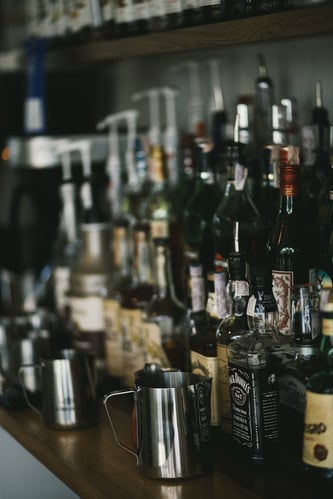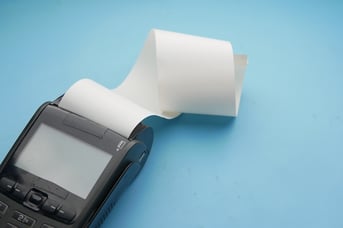 Chapter 3: Location, Location, Location
Chapter 3: Location, Location, Location
When it comes to opening a bar, choosing the right location can make all the difference. This chapter explores the importance of finding the perfect spot for your bar and how it can contribute to your success in the competitive hospitality industry.
The first factor to consider when selecting a location for your bar is foot traffic. Look for areas with high pedestrian activity, such as bustling downtown areas, popular shopping districts, or vibrant neighborhoods. A steady flow of potential customers passing by your bar increases the chances of attracting new patrons and generating consistent business.
Competition is another crucial aspect to evaluate. While some level of competition can indicate a thriving market, it's important to find a location where you can stand out and offer something unique. Research existing bars in the area and assess their target audience, concept, and atmosphere. Identify gaps in the market that you can fill or consider differentiating yourself through a specialized theme, signature cocktails, or exceptional service.
The overall vibe of the neighborhood plays a significant role in the success of your bar. Consider the demographic of the area and whether it aligns with your target audience. For instance, a trendy, up-and-coming neighborhood might attract a younger crowd interested in craft cocktails and live music, while a more established residential area might cater to a more relaxed, family-oriented clientele. Understanding the local culture and preferences will help you create a bar that resonates with the community.
Now, let's talk about bar inventory and bar inventory software. Once you've secured a location, effective inventory management becomes crucial to your bar's profitability. Bar inventory software can simplify this process by providing real-time tracking of stock levels, helping you optimize purchasing decisions and reduce waste.
With bar inventory software, you can easily monitor the usage of ingredients, track sales trends, and generate detailed reports. This data-driven approach allows you to make informed decisions about menu offerings, pricing, and reordering. By efficiently managing your inventory, you can minimize costs and maximize profits.
In conclusion, choosing the right location is key to the success of your bar. Consider factors such as foot traffic, competition, and the neighborhood's vibe when making your decision. Additionally, implementing bar inventory software ensures efficient inventory management, leading to better cost control and profitability. By optimizing both your physical location and inventory processes, you'll set a solid foundation for a thriving bar business.
Liquor Inventory Experts
Topics: Bar inventory, bar inventory levels, bar profitability, managing liquor inventory cost, opening a bar, bar location, bar inventory system, bar inventory software, bar inventory app
 Leveraging technology solutions can greatly streamline bar inventory processes, enhancing efficiency and accuracy within a "bar inventory system" and "liquor inventory system." Let's explore some key technology solutions that can help bars optimize their inventory management.
Leveraging technology solutions can greatly streamline bar inventory processes, enhancing efficiency and accuracy within a "bar inventory system" and "liquor inventory system." Let's explore some key technology solutions that can help bars optimize their inventory management.
1. Bar Inventory Systems: Implementing a dedicated bar inventory system or liquor inventory management software provides a centralized platform to track and manage inventory. These systems offer real-time visibility, automated reordering, and generate reports for analysis.
2. Barcode Scanning: Utilize barcode scanning technology to expedite inventory counting and reduce human errors. Each inventory item can be assigned a unique barcode, allowing for quick and accurate scanning during inventory checks.
3. Mobile Applications: Mobile inventory management applications enable staff to access inventory information, conduct counts, and update stock levels using handheld devices. This eliminates the need for manual data entry and provides flexibility in performing inventory tasks.
4. Point-of-Sale (POS) Integration: Integrate the bar inventory system with the POS system to automate inventory updates based on sales transactions. This real-time synchronization ensures accurate tracking and prevents discrepancies between recorded sales and actual inventory.
5. Internet of Things (IoT) Sensors: IoT sensors can monitor stock levels, temperature, and other environmental factors in real-time. These sensors provide automated alerts when inventory thresholds are reached, ensuring timely restocking and minimizing stockouts.
6. Cloud-Based Storage: Storing inventory data in the cloud offers accessibility, scalability, and data security. Cloud-based systems allow authorized personnel to access inventory information from anywhere, facilitating remote inventory management.
7. Data Analytics and Reporting: Utilize data analytics tools integrated with the inventory system to gain insights into sales trends, consumption patterns, and inventory performance. Customizable reports help identify opportunities for optimization and informed decision-making.
8. Supplier Portals: Implement online supplier portals that allow for seamless communication, ordering, and tracking of inventory with vendors. This streamlines the procurement process, ensures accurate delivery tracking, and enhances supplier relationships.
9. Internet of Things (IoT) Tracking: IoT tracking devices can be attached to high-value inventory items, such as kegs or premium liquor bottles, to monitor their location and movement. This technology helps prevent theft and ensures accurate inventory control.
10. Training and Support: Offer staff training and ongoing support to ensure efficient utilization of technology solutions. Empower them to leverage the capabilities of the systems and address any technical issues or questions they may encounter.
By implementing technology solutions tailored to bar inventory management, bars can streamline processes, improve accuracy, and enhance overall efficiency. Bar inventory systems, barcode scanning, mobile applications, POS integration, IoT sensors, cloud-based storage, data analytics, supplier portals, IoT tracking, and comprehensive training enable bars to optimize their inventory control systems and maximize profitability in the competitive hospitality industry.
Topics: Bar inventory, nightclubs, managing liquor inventory cost, receiving inventory, liquor inventory app
 There are countless reasons why one should be on top of their liquor inventory. Being in the business now for over 10 years here are the 4 most prominent points I have seen during that time.
There are countless reasons why one should be on top of their liquor inventory. Being in the business now for over 10 years here are the 4 most prominent points I have seen during that time.
- Get an actual inventory number. By taking inventory and updating your values you will go to sleep better at night knowing all your ducks are in a row. Along with having up to date inventory you should always have up to date inventory costs. This way you have a monetary value to your stock and you see that its not just stuff taking up space but actually the life blood of your business. Treat it like a stock you invest X and if you sell X for its full value you will receive Y. Which is a much better return then any Stock.
- Knowingwhat you have in inventory will allow you to know what your should be ordering to replenishingyour liquor products. This will allow you to accurately stock your shelves and not have overstock sitting on the shelf tying up money that you could be using for other things in your business like promotion and advertising.
- Negotiatingbetter buying prices. By knowing what you are using and what you normally order you can speak to your distributor and negotiate price deals allowing you to lower you bottom line and increase your profit.
- Taking inventory can allow you to see what shrinkage you are experiencingat your bar. If you have an opening inventory + all you purchases during the period - you closing inventory you can be 100% sure what your actual losses are. No more guess work allowing you to tackle the problem head on and get your business running at optimal profit.
These are just 4 reasons why you should be taking regular inventory. With all the technology out there today there are many tools that can and will simplify the process. Do your homework and find which works best for you. I guarantee you will sleep much better knowing your liquor inventory is being managed properly.
Topics: liquor inventory, liquor purchasing, managing liquor inventory cost, Liquor Inventory savings
Liquor Cost
 Many hospitality operators want to know what their liquor cost is. Many times, we simply divide the cost of goods sold by the revenues to come up with a liquor cost percentage. Often, this number is inaccurate or to late in the cycle to take corrective actions.
Many hospitality operators want to know what their liquor cost is. Many times, we simply divide the cost of goods sold by the revenues to come up with a liquor cost percentage. Often, this number is inaccurate or to late in the cycle to take corrective actions.
Here are the steps and key elements needed for a proper liquor cost percentage.
- What is the opening liquor inventory value of full and partial bottles throughout the period?
- What is the closing liquor inventory value of full and partial bottles throughout the period?
- What are the registered liquor sales for the specific period
- We then divide the cost of goods sold by the sales to come up to a percentage.
The variables you must consider:
- Are the costs of my liquor products updated?
- Is the actual physical inventory of my liquor bottles accurate?
- Are my sales strictly liquor; no wine or beer
If you answered yes to all three, then this will be your actual liquor cost.
How does this liquor cost compare to where you actually should be?
Please read our blog on Alcohol Inventory Cost vs Pricing
Topics: managing liquor inventory cost, Liquor cost, controling costs


